
1st grade science key vocabulary English/Spanish translations (space to add drawing as well).
- Material Type:
- Lesson Plan
- Date Added:
- 06/01/2012

1st grade science key vocabulary English/Spanish translations (space to add drawing as well).
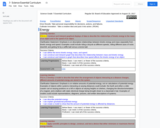
7th Grade Regular Science Scope & Sequence
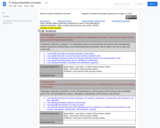
8th Grade Regular Science Scope & Sequence
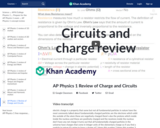
In this video David quickly explains each charge and circuit concept and does a sample question for each one. Created by David SantoPietro.
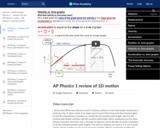
In this video David rapidly explains all the concepts in 1D motion and also quickly solves a sample problem for each concept. Keep an eye on the side scroll see how far along you've made it in the review video. Created by David SantoPietro.
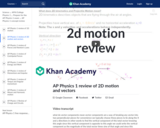
In this video David quickly explains each 2D motion concept and does a quick example problem for each concept. Keep an eye on the scroll to the right to see where you are in the review. Created by David SantoPietro.
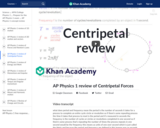
In this video David explains each concept for centripetal motion and solves an example problem for each concept. Created by David SantoPietro.
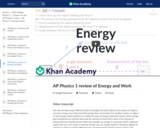
In this video David explains the concepts in Work and Energy and does an example problem for each concept. Link for document: https://www.dropbox.com/s/t1w6xlnkozzel17/Energy%20review.pdf?dl=0. Created by David SantoPietro.
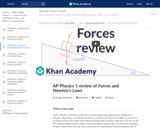
In this video David quickly explains each concept behind Forces and Newton's Laws and does a sample problem for each concept. Keep an eye on the scroll to the right to see how far along you've made it in the review. Created by David SantoPietro.
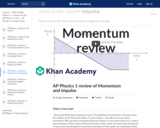
In this video David quickly reviews the momentum and impulse topics on the AP Physics 1 exam and solves an example problem for each concept. Created by David SantoPietro.
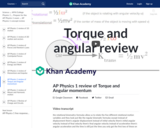
In this video, David quickly explains each torque and angular concept and does a sample question for each one. Created by David SantoPietro.
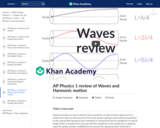
In this video David quickly explains each concept for waves and simple harmonic motion and does an example question for each one. Created by David SantoPietro.

This video segment adapted from First Light explains why the highest peak in the Pacific, Mauna Kea, is an ideal site for astronomical observations. Featured are new telescope technologies that allow astronomers to explore the universe in more depth.
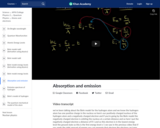
Using shell model diagram to relate absorption to emission. Derives relationship between emitted photon and energy levels, the Balmer-Rydberg equation. Created by Jay.

Using students' step length to understand the relationship between distance, speed and acceleration. Includes graphing of data and interpretation of graphs.

This segment from Swift: Eyes through Time traces the history military officers and engineers discovering a strange phenomenon in the sky that astronomers now know are gamma-ray bursts.

In this video segment, the ZOOM cast demonstrates how to use cabbage juice to find out if a solution is an acid or a base.

In this video segment adapted from ZOOM, two cast members demonstrate what happens when vinegar is added to baking soda inside a container. The resulting chemical reaction produces enough carbon dioxide to launch their paper rocket skyward.
Recommended for: Grades K-5

A car propelled by the reaction between lemon juice and baking soda has more in common with rockets and jet aircraft than one might think. In this video segment adapted from ZOOM, two cast members demonstrate the power of rocket-propelled vehicles and how to exploit the force produced by the carbon dioxide gas. Grades 3-8.
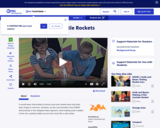
It would seem that bottles of lemon juice and rockets have only their basic shape in common. However, as two cast members from ZOOM demonstrate in this adapted video segment, when baking soda is added to the mix, a plastic bottle can act very much like a real rocket. Grades 3-8.